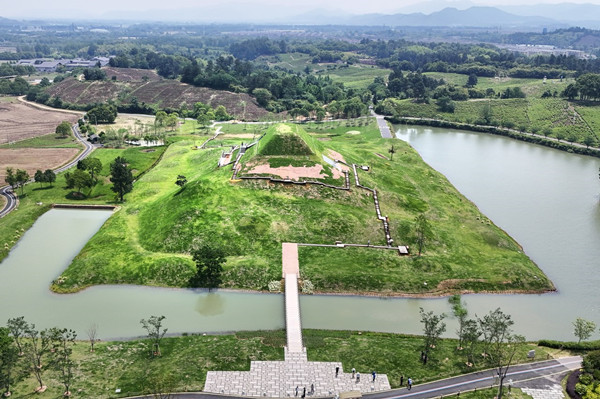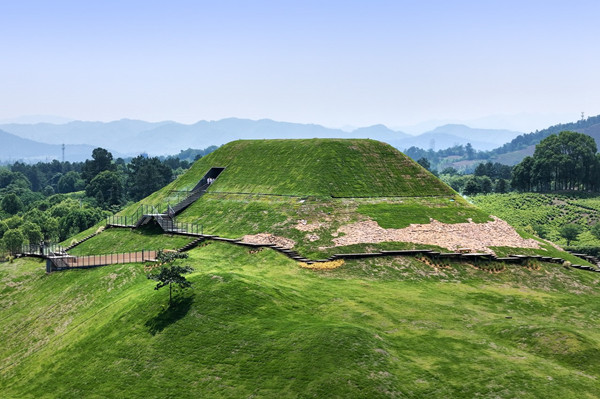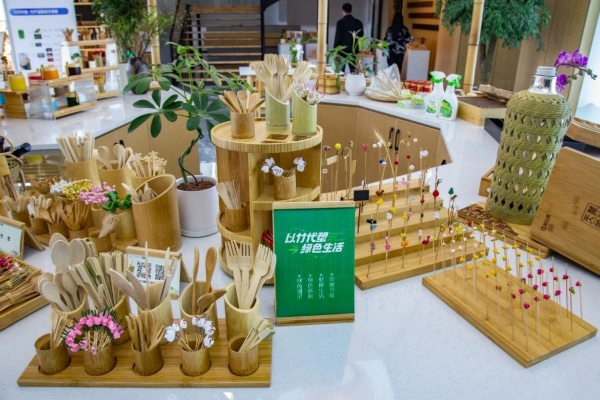Huzhou's Yue state tomb opens to the public

A bird's-eye view of the Bamudun tomb. [Photo/Tide News]
The Bamudun tomb, located at the highest point of the Longshan burial site in Gucheng village, Anji county, Huzhou, East China's Zhejiang province, opened to the public on May 25.
The tomb belongs to the Yue State from the Spring and Autumn Period (770–476 BC). It's regarded as being an important example of its kind, with the largest size and the highest social class among the tomb groups of the Yue State nobles in Longshan.
From October 2016 to the end of October 2019, archaeologists conducted a three-year exploration there, revealing that the Bamudun tomb was indeed a well-preserved royal tomb of the ancient Yue State.
The tomb comprises a main tomb, accompanying tombs, burial pits, and a surrounding moat. The excavation uncovered 31 accompanying tombs and 571 burial artifacts made from pottery, porcelain, jade, and stone. The main tomb yielded numerous jade and turquoise ornaments used as crowns and clothing accessories.
Covering an area of over 30,000 square meters, the tomb's orderly layout and unique structure provide valuable physical evidence for studying the history and burial practices of the Yue State.

The Bamudun tomb is a well-preserved royal tomb of the Yue State from the Spring and Autumn Period (770–476 BC). [Photo/Tide News]





